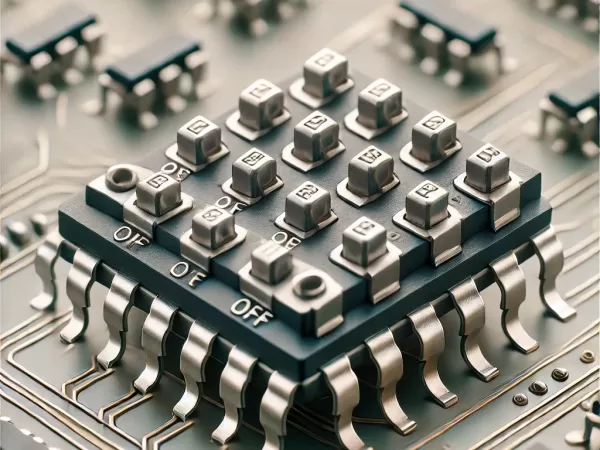"How to use DIP switches to simplify circuit configuration? Technical explanation"

1. Flexible binary control
The core technical principle of the DIP switch is to control the circuit through the binary "0" and "1" states. The combination of multiple switch positions can accurately control the working state of different parts of the circuit. This allows engineers to dynamically change the configuration of the device with a simple toggle operation. For example:
- Address selection : In a communication network, different network addresses or device IDs can be assigned to devices by changing the state of the DIP switch.
- Mode switching : In embedded systems, the operating mode of the device (such as low power mode, high performance mode, etc.) can be selected through the DIP switch.
2. Hardware configuration instead of software configuration
Traditionally, circuit configuration often needs to be implemented through software, such as setting registers in a microcontroller or defining operating modes through programming. Although software configuration is highly flexible, it may increase the complexity of development in some application scenarios, especially when the configuration needs to be adjusted frequently. The physical characteristics of the dip switch provide an alternative:
- Instant configuration : No programming or firmware loading required, just flip a DIP switch to switch between functions.
- Secure configuration : With a physical switch, the configuration is not lost due to a device reboot or software crash, ensuring the circuit always remains in the correct state.
3. Reduce pin occupancy
In microcontrollers or other electronic components, the number of I/O pins is usually limited. DIP switches can achieve multiple functions by occupying a small number of pins. For example, a 4-position DIP switch only needs 4 pins, but can achieve 16 different configurations. This greatly optimizes the use of pins and improves the flexibility and efficiency of circuit design.
4. Use in combination with other components
The dip switch can not only be used independently, but also can be combined with other components (such as resistors , capacitors , transistors , etc.) to achieve more complex control functions. For example, a dip switch is used in a circuit to select different resistance values to adjust the signal strength or the impedance matching of the circuit. This combination makes the application of dip switches in circuit design more flexible.
How to use dip switches to simplify configuration in actual design?
1. Address setting and mode selection
In industrial control systems, different devices often need to be assigned unique addresses or identifiers. DIP switches can be used to configure device addresses by manually setting individual switch positions. For example, in the Modbus communication protocol, a unique slave address can be set for each device through a DIP switch. Similarly, in smart devices or embedded systems, different operating modes, such as high-efficiency mode or power-saving mode, can also be selected through DIP switches.
2. Select the circuit path
DIP switches can be used to control the direction of current flow, thereby selecting different circuit paths. For example, in electronic test equipment, DIP switches can be used to select different signal channels or switch different test modes. This configuration is very suitable for test and measurement equipment that requires frequent switching functions.
3. Adjust parameters
In some analog circuits, dip switches can be used to adjust key parameters of the circuit, such as voltage, resistance, or frequency. By changing the state of the dip switch, engineers can quickly adjust the performance parameters of the circuit without redesigning or adjusting the circuit.
4. Security protection configuration
In some critical systems, dip switches can be used as physical protection for security configuration. For example, certain functions can be enabled or disabled through dip switches to ensure that certain sensitive functions are not accidentally triggered when not needed. This design is particularly suitable for industrial equipment or medical equipment with high security requirements.
By making proper use of dip switches, engineers can easily cope with the challenges of circuit configuration in design and achieve more flexible and reliable system control. If you are looking for a tool to simplify configuration and improve efficiency, dip switches are undoubtedly a choice worth considering.
If you are interested, you can communicate with us.